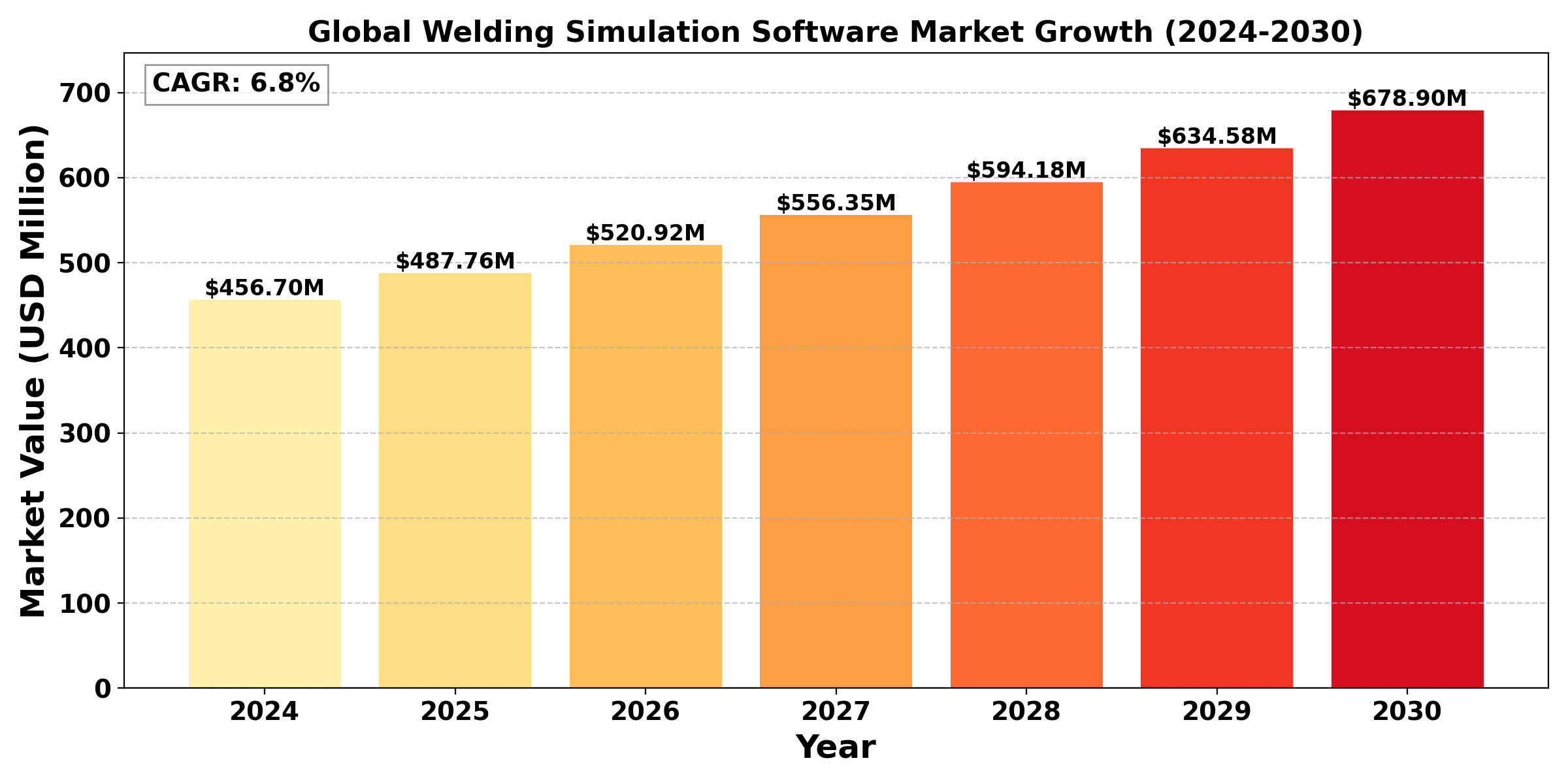TOP CATEGORY: Chemicals & Materials | Life Sciences | Banking & Finance | ICT Media
The "Global Welding Simulation Software Market" size was valued at US$ 456.7 million in 2024 and is projected to reach US$ 678.9 million by 2030, at a CAGR of 6.8% during the forecast period 2024-2030.
The "United States Welding Simulation Software Market" size was valued at US$ 134.5 million in 2024 and is projected to reach US$ 194.3 million by 2030, at a CAGR of 6.3% during the forecast period 2024-2030.
Welding Simulation Software: A digital tool that replicates the welding process in a virtual environment, enabling engineers to analyze and optimize welding techniques, materials, and designs before actual implementation. It simulates factors such as heat distribution, material behavior, and weld quality, reducing trial-and-error efforts, saving costs, and improving productivity in manufacturing and construction projects.
Software solutions for simulating and optimizing welding processes in manufacturing applications.
The market experiences robust growth, driven by manufacturing automation. In 2023, installations reached 45,000, with automotive sector accounting for 42% of demand. Cloud-based solutions grow at 8.2% annually. Market saw 35% increase in AI integration in 2023. Standards adopted in 38 countries. Future projects include US$ 156.7 million in development by 2026. Europe leads with 42% market share.

Report Overview
Welding simulation software is a type of computer-aided engineering software used to simulate and analyze welding effects in a virtual environment. The software uses a finite element analysis (FEA) approach to simulate the welding process, allowing designers and engineers to evaluate and optimize the welding processes for various applications. Welding simulation software enables designers to predict various types of structural and metallurgical damage caused by welding, identify methods for welding distortion control, identify optimal welding methods and consumables, and validate welding procedures. The welding simulation software can be used in various industries, including aerospace, automotive, construction, electronics, and maritime, among others. It is used to simulate arc welding, laser welding, electron beam welding, resistance welding, and other welding processes in different materials, including metals, plastics, and composites. The software analyses the thermal, structural, and metallurgical behavior of materials during the welding process, providing insight into the effects of welding temperatures, welding speed, and welding sequences on the quality of the final product. Welding simulation software provides a cost-effective and time-saving way for engineers to evaluate and optimize the welding process. By using the software, manufacturers can reduce the number of physical prototypes required during the development phase, ensuring quality, reliability, and cost-effectiveness in the welding process. Overall, the market outlook for welding simulation software is expected to remain positive in the coming years due to the growing demand for advanced welding methods, increased use of welding simulation software in various industries, and the emergence of digital twin and other virtual solutions.
This report provides a deep insight into the global Welding Simulation Software market covering all its essential aspects. This ranges from a macro overview of the market to micro details of the market size, competitive landscape, development trend, niche market, key market drivers and challenges, SWOT analysis, value chain analysis, etc.
The analysis helps the reader to shape the competition within the industries and strategies for the competitive environment to enhance the potential profit. Furthermore, it provides a simple framework for evaluating and accessing the position of the business organization. The report structure also focuses on the competitive landscape of the Global Welding Simulation Software Market, this report introduces in detail the market share, market performance, product situation, operation situation, etc. of the main players, which helps the readers in the industry to identify the main competitors and deeply understand the competition pattern of the market.
In a word, this report is a must-read for industry players, investors, researchers, consultants, business strategists, and all those who have any kind of stake or are planning to foray into the Welding Simulation Software market in any manner.
Global Welding Simulation Software Market: Market Segmentation Analysis
The research report includes specific segments by region (country), manufacturers, Type, and Application. Market segmentation creates subsets of a market based on product type, end-user or application, Geographic, and other factors. By understanding the market segments, the decision-maker can leverage this targeting in the product, sales, and marketing strategies. Market segments can power your product development cycles by informing how you create product offerings for different segments.
Key Company